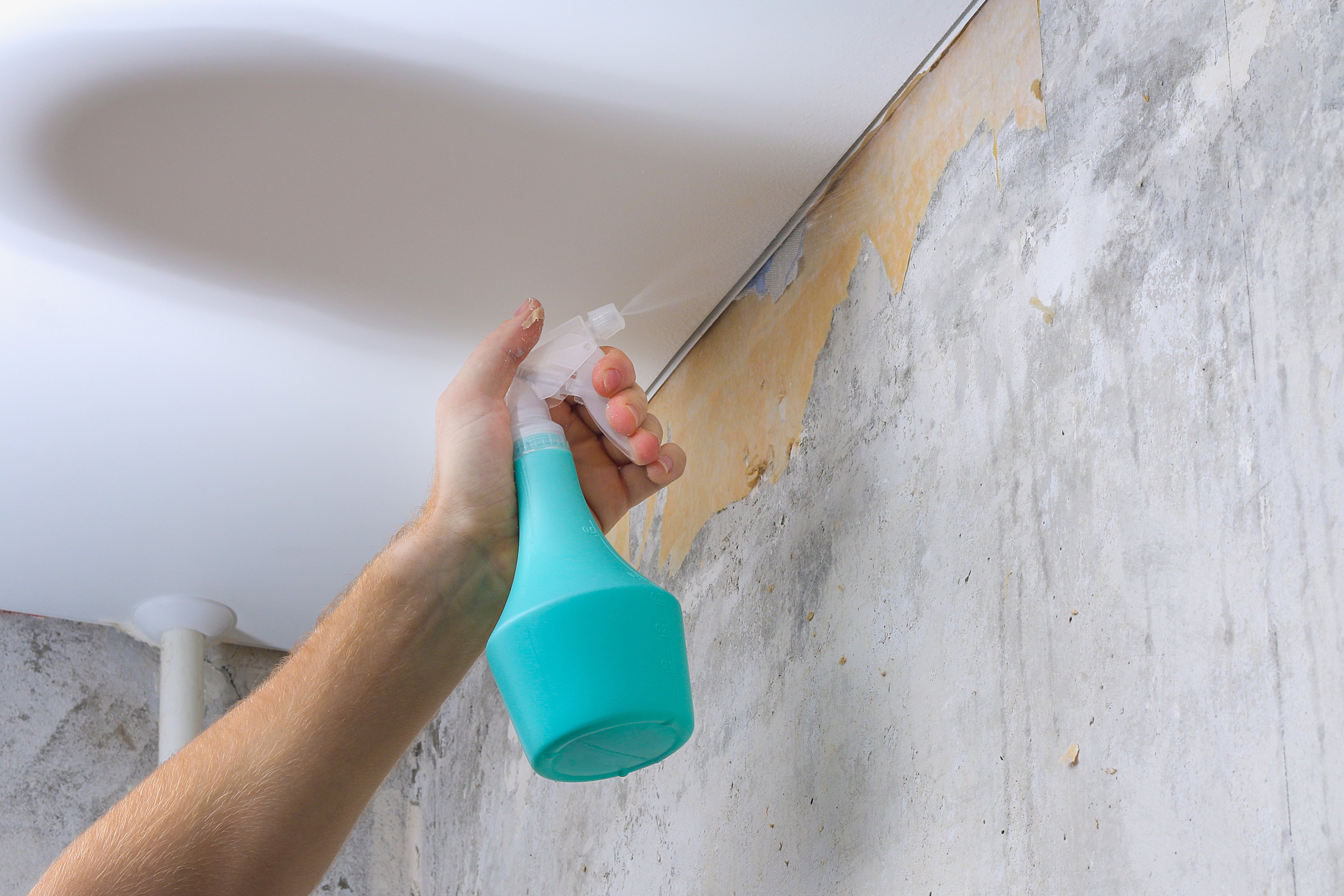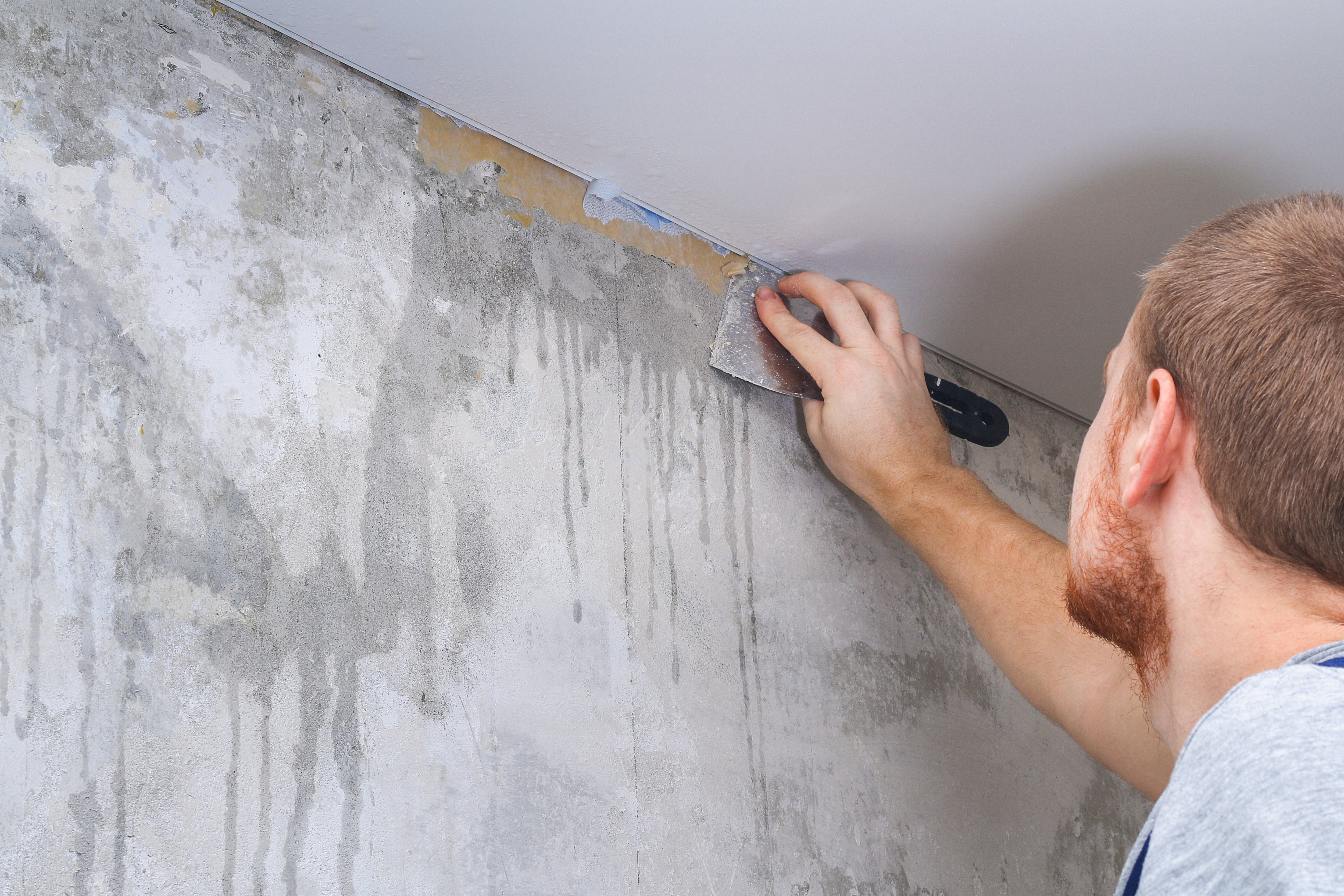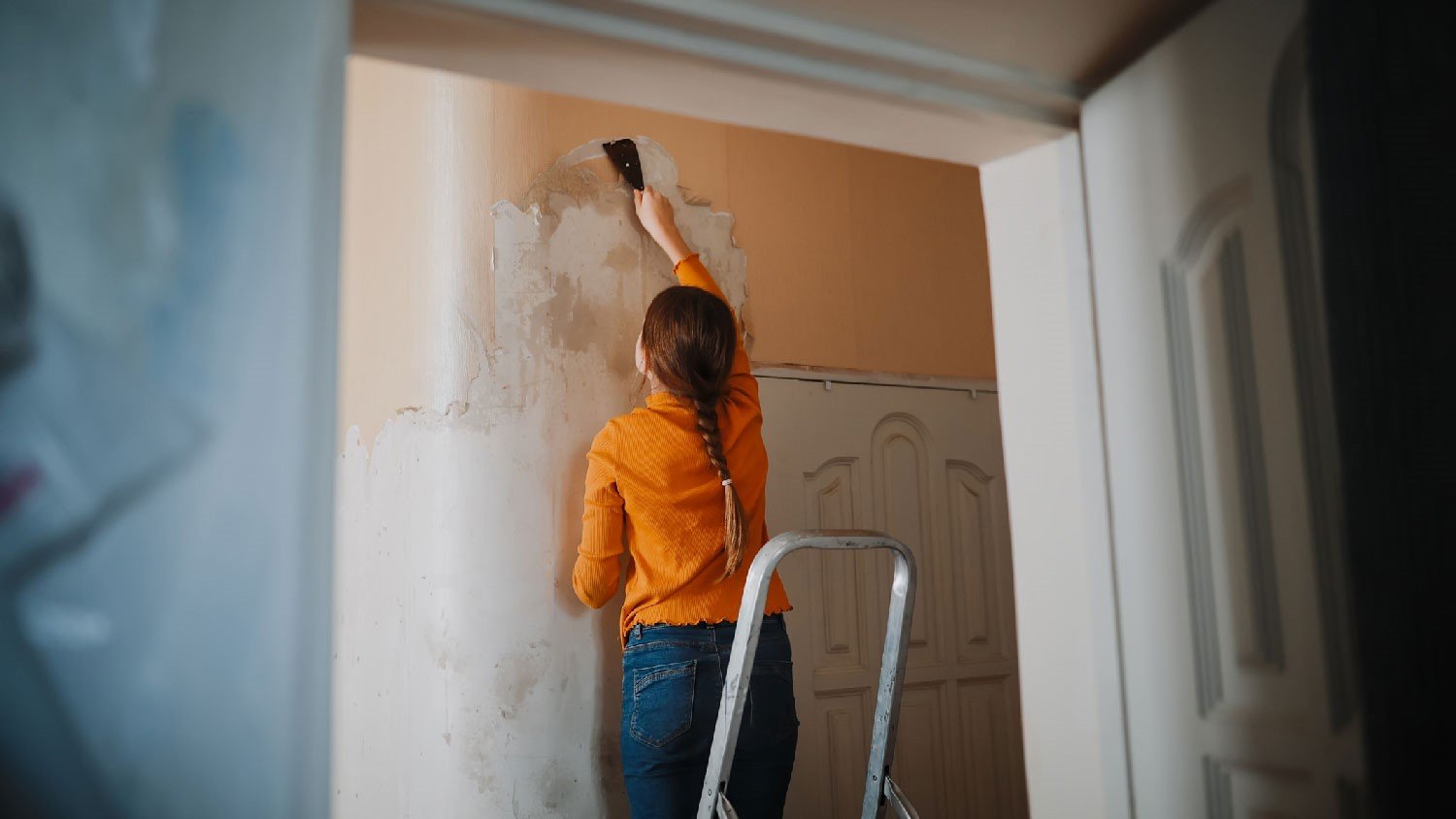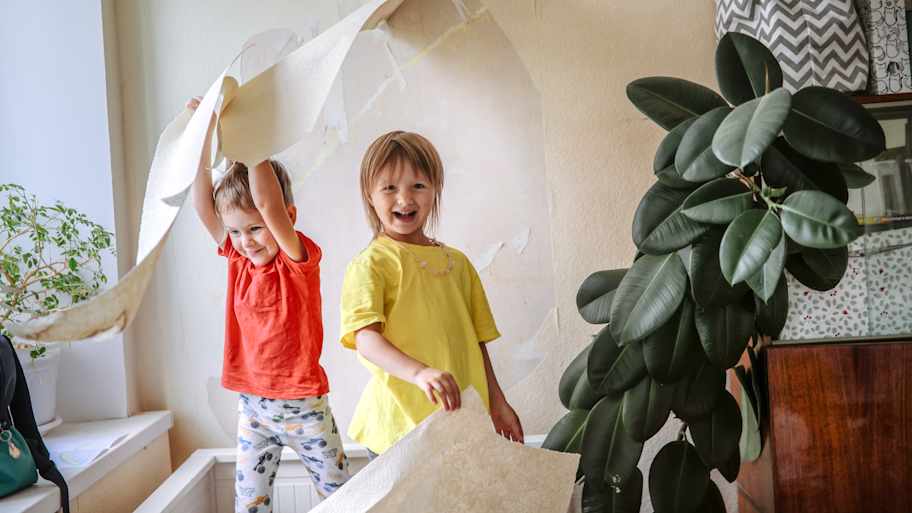
Get transparent wallpaper removal cost info to learn average prices, key cost factors, and tips to save on your wallpaper removal project.
Don’t get stuck with decades-old design choices


A pro will remove a wallpaper border faster than a DIY approach.
Removing wallpaper incorrectly can cause damage to the underlying wall, expose you to hazardous materials (such as lead or asbestos in older homes), and result in electrical shock.
A local wallpaper pro will have the tools and skills to remove wallpaper borders in hard-to-reach places.
Design tastes change over time, and the wallpaper border you chose years ago may no longer suit your style. When it comes time to change up the look of a room, removing wallpaper border can be a tricky and sticky task. You can remove wallpaper border using methods including simply peeling it off, applying heat or steam, spraying a homemade solution, or using chemical stripper. Use our guide to learn five ways to effectively remove wallpaper border.
Whether you’re installing new wallpaper or painting your walls, old wallpaper border can interfere with a smooth, finished result. Even if you’re planning to paint over wallpaper, leaving a border up will leave a visible line under the paint, resulting in an unwanted texture change from the wall to the border. Wallpaper removal is an important step in prepping walls for a new look, and fortunately, removing a border takes much less time and effort than removing a whole wall’s worth of wallpaper.
Before you get started, gather your supplies and make sure you have a stable ladder or step stool that allows you to work with the border without uncomfortably stretching or reaching comfortably. Make cleanup easier by laying down a drop cloth to catch falling paper and protect your floors.

The best method to remove wallpaper border depends on how long the border has been up, what kind of adhesive it uses, what condition the paper is in, and what the environmental conditions of the room are. Some borders may come up very easily, while others require a little more elbow grease.
If your wallpaper border is relatively new and in good condition, you can simply peel it off using a putty knife or scraper. Starting at a seam, peel up a corner and gently use the putty knife or scraper to slide between the wall and the border, using your other hand to peel the border away from the wall as you work.
Wallpaper border that’s a little more stubborn may need more than just peeling. If you’re sensitive to synthetic solutions and prefer a natural alternative, vinegar may be the method for you. Mix equal parts white vinegar and warm water in a spray bottle and thoroughly saturate the border with the solution. Wait 10 to 15 minutes and then use your putty knife or scraper to scrape the border away from the wall.
In some cases, wallpaper adhesive may require heat to soften up enough for removal. Using a hairdryer or heat gun, apply heat to a small section of wallpaper border, starting at the seam. Use a putty knife or scraper to lift the border away from the wall as soon as the adhesive begins to soften to avoid applying too much heat and potentially damaging your walls. Continue working in small sections to remove the border.
Using steam allows you to combine the adhesive-loosening properties of both heat and moisture and can work well for wallpaper border that’s difficult to remove. Using a handheld steamer, steam a small section of border, then slide your scraper or putty knife between the border and the wall to separate them. Keep working in small sections, taking care not to saturate your walls, which could cause warping or other moisture damage.
If you’re dealing with a decades-old wallpaper border that won’t budge, you may need to use a chemical wallpaper remover. Be sure to select a remover appropriate for the type of wallpaper and walls you have. Ensure good ventilation in the room and use gloves, eye protection, and a respirator while working with chemical remover.
Apply the remover and let it sit according to the manufacturer’s instructions. Once the recommended amount of time has passed, scrape the border off. If any sections are particularly stubborn, try scoring the border lightly with a utility knife before applying the remover.

When removing wallpaper border, always start with the simplest methods and work your way up to the more involved ones if your border proves resistant to removal. You’re less likely to damage your walls by peeling the wallpaper or applying heat, and chemical remover should be used as a last resort due to the potential health and safety hazards.
If you find that your walls are being damaged as you remove the border, you may be either working too fast or using a method that’s not gentle enough. Slow down and take care to minimize damage to the walls as you work.
Is it worth it to hire someone to remove wallpaper border? In some cases, this is an easy DIY project that you can complete in just a few hours. However, if your wallpaper border is difficult to remove or you’re concerned about damaging your walls, a local wallpaper installer can professionally remove your wallpaper border without damage. Wallpaper removal costs between $0.60 and $3 per square foot, but some contractors may have a job minimum, so removing a border may cost more per square or linear foot than an entire wall.
From average costs to expert advice, get all the answers you need to get your job done.

Get transparent wallpaper removal cost info to learn average prices, key cost factors, and tips to save on your wallpaper removal project.

The paper is off, but your walls need some love. Learn how to repair your walls after a wallpaper removal project and prep them for paint or new decor.

Wallpaper removal requires physical labor and can be a sticky mess. Consider these tips on the best ways to remove wallpaper to make the process as smooth as possible.

Whether you want to replace or remove your wallpaper, these handy tips for stripping wallpaper will make the process as easy as possible.

Taking down wallpaper is a tedious and time-consuming job. Here are some tips on how to hire someone to remove wallpaper for you to make your life easier.